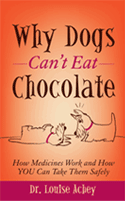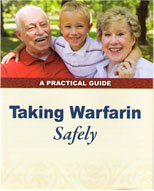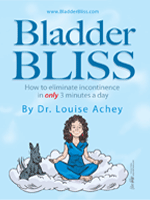When Caffeine Kills
Tags: adverse effects of medicine, caffeine powder, coffee, energy drinks, ephedra, FDA, Food and Drug Administration, heart problems, medicine-related death, overdose, side effects
6 am usually finds me in my kitchen in front of a rectangular appliance 14 inches high, blending hot milk and coffee to jump-start my brain. My brushed nickel Gaggio Classic espresso maker is my go-to kitchen appliance every morning, to help me create my favorite form of caffeine: a 16-ounce hazelnut flavored latte, extra hot.
I’m one of the 100 million Americans who drink coffee every day, and like 60% of them, I consider coffee a mandatory part of my morning routine. There’s even a celebration associated with our coffee habit: August is National Coffee Month.
Although Americans purchase a large proportion of the world’s supply of coffee beans and gave the world Starbucks®, Seattle’s Best® and Dunkin’ Donuts®, we only rank 25th in the world in per capita coffee consumption. The top 5 include Finland, Norway, Iceland, Denmark and the Netherlands.
Coffee is popular worldwide. In fact, behind crude oil, green (unroasted) coffee beans are the second most traded and valued commodity in the world. Coffee is also called “java” because when coffee first became popular in the 19th century the highest quality of beans came from the Philippine island of Java.
Most people drink coffee for the lift it gives from its caffeine content. Found in over 60 different plants, caffeine’s stimulant effect on the brain can be detected in amounts as low as 10mg, a tenth of the 100mg dose found in an average 8-ounce cup of brewed coffee.
As the most common psychoactive compound ingested in the world, caffeine is present in coffee, tea, a South American drink called mate, and cola flavored sodas containing kola nut extract, although today’s manufacturers of carbonated beverages use synthetic sources of flavoring and caffeine instead of natural kola nut.
Enterprising manufacturers have added caffeine to other things besides carbonated soft drinks. Red Bull®, Monster® and 4-Hour Energy® are huge commercial successes, offering the rapid pick-me-up effect of caffeine without the taste of coffee. Stay Alert® chewing gum has 100mg of caffeine per stick, about the same amount of caffeine as a good ol’ cup of Joe. Not interested in drinking a beverage to get your day going? Wired Waffles®, made in Marysville, Washington, contain 200mg of caffeine each, the same as in 2 cups of brewed coffee. There’s even caffeinated pancake syrup, although its designed to be used over plain pancakes and waffles, not “wired” ones. You can check out caffeinated waffles and syrup at www.wiredwaffles.com or on their Facebook page.
Although caffeine has been traditionally consumed in beverages, the Food and Drug Administration (FDA) is concerned about the practice of adding it to foods, particularly since waffles, pancake syrup, gum and candy are attractive to children.
The currently recommended limits of caffeine intake are 300mg per day in adults and 100mg daily in teens and young adults. The FDA is concerned about food products containing caffeine as an additive because little is known about the effects of caffeine in small children, young adults, or in pregnancy. In addition, most adolescents are not aware of the amount of caffeine they consume, especially in energy drinks.
People differ in how sensitive they are to the side effects of caffeine. Some adults can drink a pot of coffee and sleep like a baby, while others experience heart palpitations, tremor, anxiety and insomnia after only one cup. Because some heart arrhythmias are aggravated by caffeine, most cardiologists tell their patients with arrhythmias to avoid caffeinated beverages entirely.
Now there’s a new caffeine source: pure powdered caffeine. Sold as a food supplement and marketed to athletes to boost energy, increase endurance and burn fat, the FDA has no control over caffeine powder like it does foods with added caffeine unless it is found to be harmful.
Unfortunately, caffeine can kill, and an Ohio teenager died in May from an accidental overdose of caffeine powder. Pure caffeine powder sold in bulk is dangerous because it’s extremely concentrated. According to the FDA, one teaspoonful of powdered caffeine is roughly equivalent to the amount found in 25 cups of regular coffee, making it nearly impossible to accurately measure a single dose (100mg) with typical kitchen measuring spoons and all too easy to get a toxic dose, especially if you mistook its white powder for something else, like artificial sweetener.
The FDA has just issued a warning to consumers to avoid using pure powdered caffeine. More information is available at http://www.fda.gov/Food/RecallsOutbreaksEmergencies/SafetyAlertsAdvisories/ucm405787.htm.
Thanks, anyway… I’m sticking to my morning latte.



